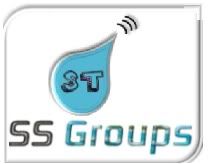Object-Oriented Programming (OOP), in computer science, type of high-level computer language that uses self-contained, modular instruction sets for defining and manipulating aspects of a computer program. These discrete, predefined instruction sets are called objects and they may be used to define variables, data structures, and procedures for executing data operations. In OOP, objects have built-in rules for communicating with one another. By using objects as stable, preexisting building blocks, programmers can pursue their main objectives and specify tasks from the top down, manipulating or combining objects to modify existing programs and to create entirely new ones.
Object-oriented programming began with Simula, a programming language developed from 1962 to 1967 by Ole-Johan Dahl and Kristen Nygaard at the Norwegian Computing Center in Oslo, Norway. Simula introduced definitive features of OOP, including objects and inheritance. In the early 1970s Alan Kay developed Smalltalk, another early OOP language, at the Palo Alto Research Center of the Xerox Corporation. Smalltalk made revolutionary use of a graphical user interface (GUI), a feature that allows the user to select commands using a mouse. GUIs became a central feature of operating systems such as Macintosh OS and Windows.
The most popular OOP language is C++, developed by Bjarne Stroustrup at Bell Laboratories in the early 1980s. In 1995 Sun Microsystems, Inc., released Java, an OOP language that can run on most types of computers regardless of platform. In some ways Java represents a simplified version of C++ but adds other features and capabilities as well, and it is particularly well suited for writing interactive applications to be used on the World Wide Web.
CHILLAPPLE Group International with SUPER SOFTWARE & SUPER TECHNOLOGY Group - A Joint Venture - Free Technology Update is a new blog on blogger blogspot provides frequent updates and latest happenings in the field of technology along with tech reviews, news and rumors. Technology Update | Technology Updates brings latest Technology News related to Computers, Softwares, Mobiles, Facebook, MySpace, Google, Microsoft,
Subscribe via email
Recent Posts
Manufacturers
Sponsor
Archives
- December 2010 (3)
- September 2010 (17)
- August 2010 (9)
- July 2010 (65)
- June 2010 (60)
- May 2010 (221)
- April 2010 (29)
- January 2010 (114)
- December 2009 (18)
- November 2009 (59)
- October 2009 (44)
- September 2009 (50)
Products
Our network

CHILLAPPLE Technology Updates by CHILLAPPLE Groups is licensed under a Creative Commons Attribution-ShareAlike 3.0 Unported License.
Based on a work at superstechnology.blogspot.com.
3d
a
acer
Apple
ar
asus
b
benq
blackberry
c
canon
cellphone
computer basics
d
dell
digital camera
e
external
f
FireFox
g
Games
Gigabyte
google
guest-post
h
Honda
hp
i
Intel
internet
iphone
ipods
l
laptops
lcd
lenovo
lg
linux
m
make money
Microsoft
monior-analysis download
monitors
motorola
multimedia downloads
n
netbook
nokia
notebook
p
Panasonic
Philips
Play Station
pmp
portable
Projectors
s
samsung
smartbook
smartphone
sony
sony ericsson
t
tablet
Technology
toshiba
touch screen
u
USB Hub
v
viliv
w
webcams
windows
Followers
Credits
| This Site CHILL APPLE TECHNOLOGY Wing has been maintained by Mr. D. Vignesh Sha, Professional Blogger with lot of experience through, SUPERSTECHNOLOGY (A Unit of SS Groups.) |
Sponsor
Future Begins Here !
Copyright © 2009 - 2010. CHILLAPPLE Group.















